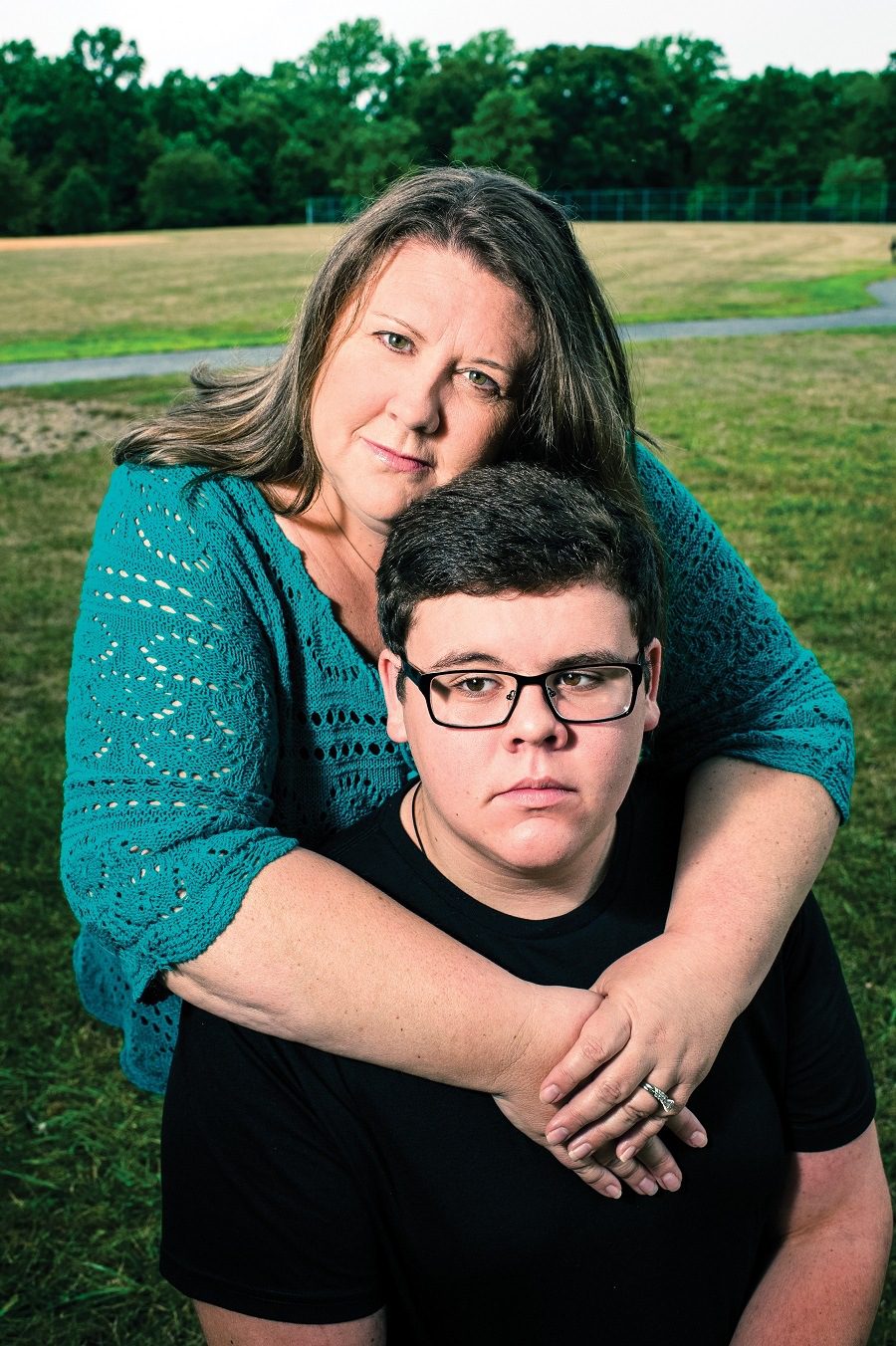

Photo by David Michael Howarth
Tessa Selin’s son Nickolas always played hard on the lacrosse field and in football games, so when he was hit on the head with a lacrosse stick a few years ago, Selin wasn’t too concerned about the injury.
“He never lost consciousness,” she says. “We took him for a CAT scan to look for fractures, and that was clear. We went through the standard concussion protocol, the neurologist visit, the impact testing – and then figured OK, case closed.”
Then Nickolas, who’d always enjoyed academics, began to struggle in his middle school classes.
“He was struggling in 7th grade, but everybody always says 7th graders are like aliens, they’re not themselves,” Selin says. “We chalked it up to that. We thought, ‘It’s the age, it’s the environment, the hormones.’ It’s only in hindsight now that we can see what we missed.”
Last spring, Nickolas, now 15, sustained a second concussion, this time during a tackling drill at football practice. After this injury, he experienced classic concussion symptoms – dizziness, headaches, a sensitivity to light – all of which, Selin says, subsided within a few days. What didn’t show up until later, the Cherry Hill mom says, were all the ways in which her son was very much not the same.
“The tricky thing about a concussion is symptoms can appear immediately, but some don’t show up until hours or days later,” says Nicole Fox, MD, medical director of the Pediatric Trauma Center at Cooper University Health Care. “If your kid has a blow to the head, it’s important to pay attention.”
At the start of Nickolas’ freshman year at Camden Catholic High School, a few months after his second concussion, it became clear he was having serious issues in school.
“His grades were God-awful,” Selin says. “But beyond that, he wasn’t reading, he wasn’t playing video games, he just was not himself. The concussions came back into our conversation, and we thought, ‘Maybe this is related.’”
Nickolas was diagnosed with significant nystagmus – a condition associated with involuntary eye movement – that was preventing his eyes and brain from working in sync.
“So when he was reading, nothing he saw on the page was reaching his brain,” Selin says. “He also wasn’t sleeping. He’d developed a major depressive disorder because of all of this. For all this time, he’d been struggling, and we didn’t even know there was anything wrong.”
According to Fox, misconceptions about concussions, particularly in children, mean common symptoms can be easy to miss. Even for medical professionals, diagnosis is difficult; there are no physical signs that point directly to a brain injury.
“The simple definition we use is: A concussion is a type of injury that changes the way the brain normally works,” Fox says. “You can’t see a concussion. There are no findings on a CT scan. But it changes the way the brain works, and so you see symptoms. Sometimes that means nausea and vomiting, dizziness or balance issues, blurry or double vision.”
“Other times,” she continues, “it’s just very minor things. They might repeat themselves or seem a little confused about the events that happened after the hit or fall. Maybe they just seem drowsy or easily irritated. It’s really something you have to spend some time examining.”
After months of therapy to treat the nystagmus and beginning treatment for his depressive disorder, Selin says her son is sleeping better, but she’s not sure he’ll ever be the kid he was before the concussions.
“I don’t know that he’ll ever be the same,” she says. “We’re working on it, but this might be his new normal. He has a defiance about him now that he didn’t have. We’re in family therapy, trying to get him back to feeling normal. I just want him to feel like he deserves good things.”
Trina Lisko, DO, of Virtua Sports Medicine, who diagnosed Nickolas’ symptoms months after his injury, says the only real treatment for a concussion is time, and it can be impossible to determine how long a full recovery will take.
“There’s nothing we can do to expedite the way the brain recovers,” she says. “In general, there’s no rhyme or reason to who will recover within two days, one week or three weeks. The younger the child is, the longer the recovery, just because children’s neurons in their brains are not fully insulated and mature. They’re more vulnerable to concussions and to that prolonged recovery.”
Lisko, who sees high numbers of adolescent and teen patients with head injuries sustained in athletic competition, says student athletes, coaches, trainers and parents need to be on high alert and err on the side of caution. If there is any worrisome impact at all, she says, it’s time to take a break.
“One of the things we try most to enlighten people about is that you do not need to hit your head to get a concussion,” Lisko says. “You don’t need a direct force to the head. A concussion is caused by the brain hitting the inside of the skull. The velocity of an impact works its way up the body to the head, and the brain can rotate and hit the skull. That means it’s not about putting a larger helmet on a kid. Even if there isn’t an impact, a whiplash maneuver can cause the brain to move.”
“When we’re evaluating an athlete on the sidelines if they had a hit that raises our concern, the general rule of thumb is to sit the athlete,” she continues. “Some people will debate – if they look fine, let them back in – but I have a very conservative approach to letting kids play again if I’m suspicious. It’s so much more important to keep a kid’s health intact than to win a match. It’s such a vulnerable state that if they experience another impact, you prolong their symptoms for a very long time.”
Selin’s not sure if or when her son will be back on the football field, and she cautions other parents of athletes to be diligent and to trust their instincts about their children’s health.
“It was so hard to see what he’d been dealing with, and I wish I had seen it sooner. In hindsight, it was so obvious,” she says. “I had so much trust in the neurologist and in the impact testing to say he was well again. I never would’ve thought to go to a sports medicine physician. I had no idea there was physical therapy for your brain.”
“Follow your gut, and look where you haven’t looked before,” she continues. “If you feel like there’s more wrong, seek more treatment. Focus on the long-term health of your child, not just getting them back on the field.”
Lisko says that while more safety equipment could be helpful, the best way to prevent sports-related head injuries is to change the sports themselves.
“More padding and equipment would allow kids to use more of their bodies,” she says. “You put a helmet on a kid, and they think their head is totally protected and they use the helmet like a weapon. That’s going in the wrong direction. Instead, we need to be discouraging heading the ball in soccer, trying to lessen the number of hits kids get, holding fewer tackling practices in football. The answer isn’t to bubble-wrap the kids – it’s to make the sports safer.”








